Several years ago, a pastor told me that the Bible’s teaching on women implied that women should never supervise men at work. At the time, I supervised two, so I told him it was too late. So he said that I should give them preference over the women I supervised, just because of their gender. I kid you not. Fast forward a few years, and a woman in our small group opined that a woman’s main role in the workplace is to make the men there feel better about themselves. Try as I might, I cannot find this chapter or verse in my Bible. Furthermore, I think my employer would be much more pleased if I followed the Bible’s real admonition to employees, which is to work for your employer with a great attitude, as if you were working for the Lord, instead of other people.* Apparently, though, no one in the room found her opinion sort of creepy except for me. There was more, but you can imagine my state of mind.
 In my line of work, book titles run past my eyes all day long every day, and one day that title was Jesus Feminist. I tend to turn away from the word “feminist,” since it is so often allied with the hard-left, pro-choice crowd, but this was just too provocative, so I took a look, read the description, logged into my Amazon account, and made my first acquaintance with this Canadian pastor’s wife, blogger, and mommy.
In my line of work, book titles run past my eyes all day long every day, and one day that title was Jesus Feminist. I tend to turn away from the word “feminist,” since it is so often allied with the hard-left, pro-choice crowd, but this was just too provocative, so I took a look, read the description, logged into my Amazon account, and made my first acquaintance with this Canadian pastor’s wife, blogger, and mommy.
We all have visions of our future lives when we are young, and having a full-time career was not part of my vision. Mother, wife, and maybe writer, yes. But I believe in a sovereign God, and a decade and a half ago, we went through a life-changing chain of events, and here I am, doing what I sincerely believe is the right thing to do—the honorable, loving, and responsible thing to do—and I have found happiness there. All day, every day, I am surrounded by brilliant, hardworking women who find great meaning in their work. I believe in a God who gifts people with the ability to make other lives better, and who puts each person in place for the good of all. The universe is not random. So how can someone else who believes in a sovereign God say that the way I lay down my life is a sin?
I opened Jesus Feminist and wept in the introduction. I sobbed through the first two chapters. I found someone who had been here before me, and she dealt with her wounds by reading the gospels over and over. She reminded me that Jesus treated women like people. He talked to them directly, against the custom of the day, and never treated them as “other.” She reprinted a Dorothy L. Sayer essay that I read decades ago that is still one of the best things I’ve ever read on the topic of Jesus and women. Sarah Bessey reminded me, in her poetic, storyteller fashion, that Jesus truly loved me, and that’s all I really needed to hear. Some of the later chapters didn’t speak to me as much, but those first chapters were so powerful that this bright yellow paperback has sat on my desk, beside my laptop, ever since then. Not that I told anyone, though, because I knew how controversial she was, and I didn’t want to be met with either gasps or outrage.
Last summer was another life-changing time. Everyone knows that it was a summer of grief over my mother’s death, as well as months filled with unrelenting physical pain from the compressed discs in my neck causing nerve pain all the way down my arm, but I’ve never told the story of the deep wound gouged into my soul during this rough time.
David and I have moved around a lot in our lives. For the first twenty years of our marriage, we moved about every five years for David’s work. Sometimes the transitions were heartbreaking, but we met all kinds of people and learned a lot from them. We studied loads of theology, visited dozens of churches, and had long, intense discussions late into the night with some folks who are deeply lodged in my heart forever. By my best count, we have been members or long-term visitors of ten separate denominations, and more than one church for a couple of those. I feel old just saying that. We’ve hosted church in our house and helped to start a couple of churches from scratch. We’ve driven long distances to church for years a couple of times, just to be sure that the teaching and fellowship we were receiving were truly biblical. We knew of a small denomination that agreed with us that two seemingly opposing ideas were both Biblical, but we never lived near one of their churches until we lived here. We were passionately devoted members of this church for seven years—until last year. When my mother died last summer, my church did—nothing. I received sympathy cards from individuals, and I treasured each one, but as a church: nothing. No meals, no visits, not even a phone call from my most beloved church of my whole life.
In the year since my mother’s death, I have had time to reflect on what God may be teaching me through long nights of grief, pain, and loneliness. I have worked and prayed to forgive, and I have come miles down that road by his grace. I have learned that love, in God’s eyes, is the most important thing, and I’ve repented for the times I didn’t love others as I should have. “If I speak in the tongues of men and of angels, but have not love, I am a noisy gong or a clanging cymbal.” I’ve realized that those first three verses of 1 Corinthians 13 cover all the kinds of churches in the world, from charismatic to reformed to legalistic to liberal, whereas I had only seen individuals in those verses before. The last verse of that chapter, “So now faith, hope, and love abide, these three; but the greatest of these is love,” has become my heart’s cry. I am doing my best to love now, having people in my home, supporting everyone I can, and praying for the most unlikely people. I will never be good at this—it is not my gift—but it is everyone’s calling.
At the same time, other things have become less important. I have started taking stock of the ways that I have fit myself into someone else’s mold, rather than reading the Bible without filters and living what it says. We live in a world full of noise, with someone telling us what to think about everything, and when we agree with one side about an issue, we’re thrown into a box with dozens of other opinions that we’re expected to believe as well. But I don’t, and it’s becoming bewildering to think that I’m the only one who holds nuanced opinions that don’t fit neatly onto a bumper sticker.
 And along came Sarah Bessey again. When I saw her new book title, Out of Sorts: Making Peace with an Evolving Faith, I thought, “Yes, that’s where I am.” Truly, if your faith is not evolving, you are just not paying attention, and considering the political events of the past year, I think most Christians are not thinking deeply enough about their faith. The idea that our religion can be co-opted into a political cause is tremendously disturbing in its own right. Combining the events of my personal life with the national, even global, turmoil has caused me to be discouraged and almost despairing for particular churches, but also for the universal Church. Heaven knows the answer doesn’t lie in creating yet another denomination.
And along came Sarah Bessey again. When I saw her new book title, Out of Sorts: Making Peace with an Evolving Faith, I thought, “Yes, that’s where I am.” Truly, if your faith is not evolving, you are just not paying attention, and considering the political events of the past year, I think most Christians are not thinking deeply enough about their faith. The idea that our religion can be co-opted into a political cause is tremendously disturbing in its own right. Combining the events of my personal life with the national, even global, turmoil has caused me to be discouraged and almost despairing for particular churches, but also for the universal Church. Heaven knows the answer doesn’t lie in creating yet another denomination.
Ms. Bessey is one of a growing group of believers who think that the church is ripe for a new reformation, and my heart resonates with that idea. She points out that a major upheaval happens about every five hundred years in the church. In other words, we’re due. We just can’t continue in the splintered, contentious fashion that we now tolerate. Who is for Paul, who is for Apollos, and who is for Jesus?** The world has changed since Martin Luther nailed a paper to a cathedral door to ask for a discussion. Thousands of discussions are taking place every minute on social media with no moderator whatsoever, and in the church, we have no leader. Pope Francis? Jerry Falwell, Jr.?
Sarah Bessey writes by telling stories, and every one is soaked with her passionate love for Jesus. I read this book like drinking a life-giving elixir. I consumed it. To paraphrase Roberta Flack, I felt she’d found my letters and read each one out loud. If I had time, I would go right back to the beginning and read it again. She pulls out one topic after another and encourages the reader to examine it honestly, leading us to be courageous by telling her own life’s stories. She has also been a part of different kinds of churches in different parts of the continent, and she has drawn truth and beauty from each experience, but she now realizes that she cannot fully assent to the beliefs of any one church. No one is right about everything, after all, but neither is everyone else wrong about everything. You may as well tell the truth about how you feel and what you think, rather than making yourself believe something in order to please someone else, because when it comes right down to it, if they don’t love you because you disagree, what do you gain by hiding the truth? The only one who matters already knows what you think, and he can take it. You may not agree with Sarah Bessey on every issue—or, like me, you may not know what you think about some of them—but she will take you gently through all of the things that need sorting out in your heart and mind.
I do believe that the future is hopeful for me and for the church, but I believe just as firmly that there is suffering ahead. The Lord has used my pain to force me to change, to let go of things I held dear, to work harder for the kingdom, to forgive and to love. As Switchfoot’s new album*** says, the wound is where the light shines through, where the grace pours in, where he reaches in to heal. Be courageous! Lean into the pain and love well.
______________
It was not my intent to hurt anyone with this post, but rather to tell my story so that others who have been deeply wounded can find comfort here. Scripture quotes are from the ESV Bible.
*There is a reference for this! Ephesians 6: 6 & 7.
**Riffing on 1 Corinthians 1:12.
***It always come down to Switchfoot, doesn’t it? I am here freely making inferences from the song “Where the Light Shines Through” and the album of the same name.
______________________
This post was originally published on www.EatReadSleep.com on 7-11-16.


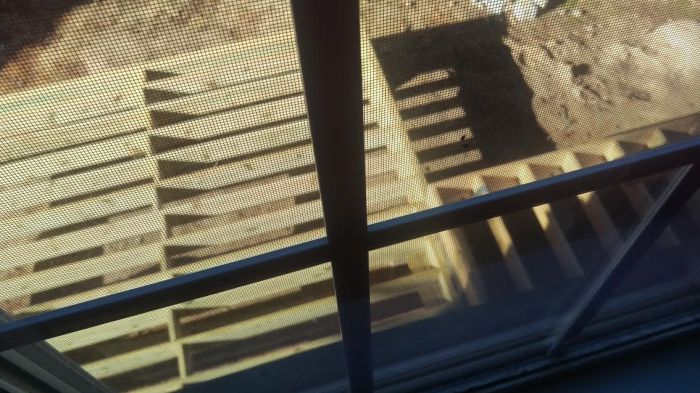



 In my line of work, book titles run past my eyes all day long every day, and one day that title was Jesus Feminist. I tend to turn away from the word “feminist,” since it is so often allied with the hard-left, pro-choice crowd, but this was just too provocative, so I took a look, read the description, logged into my Amazon account, and made my first acquaintance with this Canadian pastor’s wife, blogger, and mommy.
In my line of work, book titles run past my eyes all day long every day, and one day that title was Jesus Feminist. I tend to turn away from the word “feminist,” since it is so often allied with the hard-left, pro-choice crowd, but this was just too provocative, so I took a look, read the description, logged into my Amazon account, and made my first acquaintance with this Canadian pastor’s wife, blogger, and mommy. And along came Sarah Bessey again. When I saw her new book title, Out of Sorts: Making Peace with an Evolving Faith, I thought, “Yes, that’s where I am.” Truly, if your faith is not evolving, you are just not paying attention, and considering the political events of the past year, I think most Christians are not thinking deeply enough about their faith. The idea that our religion can be co-opted into a political cause is tremendously disturbing in its own right. Combining the events of my personal life with the national, even global, turmoil has caused me to be discouraged and almost despairing for particular churches, but also for the universal Church. Heaven knows the answer doesn’t lie in creating yet another denomination.
And along came Sarah Bessey again. When I saw her new book title, Out of Sorts: Making Peace with an Evolving Faith, I thought, “Yes, that’s where I am.” Truly, if your faith is not evolving, you are just not paying attention, and considering the political events of the past year, I think most Christians are not thinking deeply enough about their faith. The idea that our religion can be co-opted into a political cause is tremendously disturbing in its own right. Combining the events of my personal life with the national, even global, turmoil has caused me to be discouraged and almost despairing for particular churches, but also for the universal Church. Heaven knows the answer doesn’t lie in creating yet another denomination.



 Friday started early, back at McCormick Place for the Children’s Author Breakfast. Let me just state here that the fees for the meals at BEA must go to the speakers, because the menus are a low-carber’s nightmare. Mini-bagels, sweet breads, and fruit. I had had some yogurt back at the hotel, just in case, so I started off this breakfast by popping the top off the coffee carafe and pouring it all over the tablecloth, my purse, and my slacks. I did manage to miss my colleague, thank goodness. The day did improve. Jamie Lee Curtis, who is one of the few celebrities to write children’s books that are truly literary, hosted a panel that included Dav Pilkey, Sabaa Tahir, and Gene Luen Yang, all of whom are brilliant and gave fascinating speeches. Ms. Curtis shared with the audience that her severely challenged son, who is now twenty, could not read until he met Captain Underpants, and so now she has a soft place in her heart for Dav Pilkey. She choked up, they embraced, and the audience wept and had more coffee. Ms. Tahir spun stories of her childhood as a bullied Muslim girl growing up in the American western desert, where her father owned a hotel. I achieved my objective of acquiring an additional copy of the much-anticipated A Torch Against the Night for a certain teen girl that I know who passionately adored Tahir’s debut, An Ember in the Ashes. Gene Luen Yang gave a rousing speech as this year’s National Ambassador for Young People’s Literature, encouraging us to read outside of our comfort zones. I agree with him that our entire world would be a more peaceful place if we lived inside one another’s stories for a while and broadened our worldviews. In all, this author’s breakfast encapsulated the heart of children’s literature: innocence, suffering, laughter, and compassion.
Friday started early, back at McCormick Place for the Children’s Author Breakfast. Let me just state here that the fees for the meals at BEA must go to the speakers, because the menus are a low-carber’s nightmare. Mini-bagels, sweet breads, and fruit. I had had some yogurt back at the hotel, just in case, so I started off this breakfast by popping the top off the coffee carafe and pouring it all over the tablecloth, my purse, and my slacks. I did manage to miss my colleague, thank goodness. The day did improve. Jamie Lee Curtis, who is one of the few celebrities to write children’s books that are truly literary, hosted a panel that included Dav Pilkey, Sabaa Tahir, and Gene Luen Yang, all of whom are brilliant and gave fascinating speeches. Ms. Curtis shared with the audience that her severely challenged son, who is now twenty, could not read until he met Captain Underpants, and so now she has a soft place in her heart for Dav Pilkey. She choked up, they embraced, and the audience wept and had more coffee. Ms. Tahir spun stories of her childhood as a bullied Muslim girl growing up in the American western desert, where her father owned a hotel. I achieved my objective of acquiring an additional copy of the much-anticipated A Torch Against the Night for a certain teen girl that I know who passionately adored Tahir’s debut, An Ember in the Ashes. Gene Luen Yang gave a rousing speech as this year’s National Ambassador for Young People’s Literature, encouraging us to read outside of our comfort zones. I agree with him that our entire world would be a more peaceful place if we lived inside one another’s stories for a while and broadened our worldviews. In all, this author’s breakfast encapsulated the heart of children’s literature: innocence, suffering, laughter, and compassion.
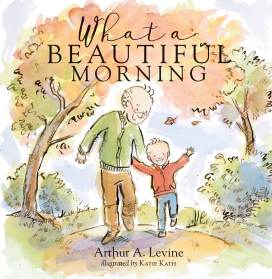 I gestured to his new book, Kids of Appetite, and he started talking again. At the end, I asked him if he was signing galleys and got all the info about where he would be. In the meantime, the very dignified woman to my right took over all author comments, since I’m sure she was convinced that I could not behave in a professional manner. This turned out to be a good thing, since I could not say a word later when Arthur A. Levine, a publisher himself, sat down to talk about his new book, What a Beautiful Morning. I could not help crying the whole time, which made him tear up, so the woman on my right was probably in despair that our entire table would be disgraced. This luncheon turned out to be much more wonderful than I expected, so Friday was becoming an excellent day.
I gestured to his new book, Kids of Appetite, and he started talking again. At the end, I asked him if he was signing galleys and got all the info about where he would be. In the meantime, the very dignified woman to my right took over all author comments, since I’m sure she was convinced that I could not behave in a professional manner. This turned out to be a good thing, since I could not say a word later when Arthur A. Levine, a publisher himself, sat down to talk about his new book, What a Beautiful Morning. I could not help crying the whole time, which made him tear up, so the woman on my right was probably in despair that our entire table would be disgraced. This luncheon turned out to be much more wonderful than I expected, so Friday was becoming an excellent day.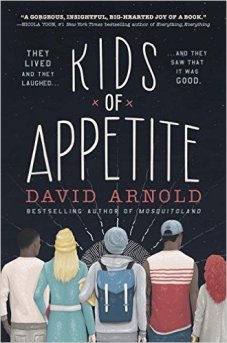 After this event, I hauled my armloads of books up two flights and immediately got in line at the Penguin booth to get David Arnold to sign Kids of Appetite. There was another line for Sabaa Tahir, but when asked if I wanted to join it, I said, “Oh, I’ve already seen her” in a lofty manner and went to Arnold’s line. I was probably the oldest person in either line, but I probably spend more money on books than any of them, so I felt justified. When I got to the front, he remembered me from the luncheon, since I was so memorable to all the witnesses, and he asked me if I wanted the book to be personalized. I said, “Hey, I did not walk all this way and stand in a line for just a signature!” So he very nicely wrote a bit in it. (I have already finished this book and will post a review later. Hint: thumbs up.)
After this event, I hauled my armloads of books up two flights and immediately got in line at the Penguin booth to get David Arnold to sign Kids of Appetite. There was another line for Sabaa Tahir, but when asked if I wanted to join it, I said, “Oh, I’ve already seen her” in a lofty manner and went to Arnold’s line. I was probably the oldest person in either line, but I probably spend more money on books than any of them, so I felt justified. When I got to the front, he remembered me from the luncheon, since I was so memorable to all the witnesses, and he asked me if I wanted the book to be personalized. I said, “Hey, I did not walk all this way and stand in a line for just a signature!” So he very nicely wrote a bit in it. (I have already finished this book and will post a review later. Hint: thumbs up.)

 Richard Peck was our opening speaker. At 82, he is still as sharp and witty as ever, and his remarks applied his seasoned wisdom to the edgiest current topics. Nothing is off the table with Mr. Peck! Years ago, while I was in graduate school, I carpooled with a school librarian who was having a tough time with a class of rowdy fifth-grade boys. She asked me for a title that she could read to them, hoping to get them interested in books. I suggested Peck’s The Teacher’s Funeral. Although the humor was down-home, I thought boys would really appreciate it. A couple of weeks later, she thanked me profusely. She bubbled over with good news about her boys, marveling that you could hear a pin drop in her class now, unless the boys were roaring with laughter in all the right places, and that they couldn’t wait to get to her class to hear the next chapter. We felt much the same way on Wednesday, hanging on his every word. You can get a taste of his speech on YouTube
Richard Peck was our opening speaker. At 82, he is still as sharp and witty as ever, and his remarks applied his seasoned wisdom to the edgiest current topics. Nothing is off the table with Mr. Peck! Years ago, while I was in graduate school, I carpooled with a school librarian who was having a tough time with a class of rowdy fifth-grade boys. She asked me for a title that she could read to them, hoping to get them interested in books. I suggested Peck’s The Teacher’s Funeral. Although the humor was down-home, I thought boys would really appreciate it. A couple of weeks later, she thanked me profusely. She bubbled over with good news about her boys, marveling that you could hear a pin drop in her class now, unless the boys were roaring with laughter in all the right places, and that they couldn’t wait to get to her class to hear the next chapter. We felt much the same way on Wednesday, hanging on his every word. You can get a taste of his speech on YouTube 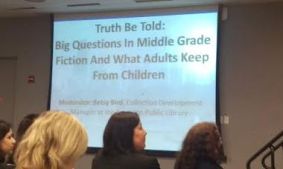 The middle grade author panel was worth the price of admission for me. Middle grade books are the ones that we remember fondly from childhood, and almost all of the great classics fall here, from Charlie and the Chocolate Factory to The Secret Garden. These new authors discussed the truth that we find in children’s literature and the sometimes overwhelming issues that children deal with, whether the adults in their lives try to shield them or not.
The middle grade author panel was worth the price of admission for me. Middle grade books are the ones that we remember fondly from childhood, and almost all of the great classics fall here, from Charlie and the Chocolate Factory to The Secret Garden. These new authors discussed the truth that we find in children’s literature and the sometimes overwhelming issues that children deal with, whether the adults in their lives try to shield them or not.  Adam Gidwitz described his new medieval novel, The Inquisitor’s Tale, which he researched while in Europe with his historian wife. Quite a leap from his Tale Dark and Grimm and Star Wars retellings! I am looking forward to this one. Jason Reynolds, author of As Brave as You (among others), held us spellbound as he mused on the themes that were common to all of us as we read stories of other cultures. As he said, stories are true when they explore the fundamental touchstones of life, such as family and the universal need to be loved. I had the privilege of hearing Jason again at the AAP Children’s Author Dinner that evening (see photo below) when he went into greater depth about his new book that explores a boy’s discovery that his grandfather, who has always been his hero, is totally blind. It is our response to life’s surprises that makes us grow bitter or grow into heroes ourselves. I have a feeling Jason will be a new favorite author for me.
Adam Gidwitz described his new medieval novel, The Inquisitor’s Tale, which he researched while in Europe with his historian wife. Quite a leap from his Tale Dark and Grimm and Star Wars retellings! I am looking forward to this one. Jason Reynolds, author of As Brave as You (among others), held us spellbound as he mused on the themes that were common to all of us as we read stories of other cultures. As he said, stories are true when they explore the fundamental touchstones of life, such as family and the universal need to be loved. I had the privilege of hearing Jason again at the AAP Children’s Author Dinner that evening (see photo below) when he went into greater depth about his new book that explores a boy’s discovery that his grandfather, who has always been his hero, is totally blind. It is our response to life’s surprises that makes us grow bitter or grow into heroes ourselves. I have a feeling Jason will be a new favorite author for me.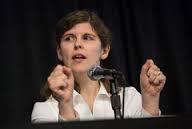
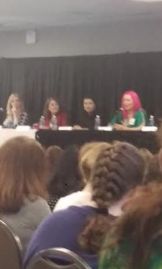 After lunch, Laini Taylor gave a wry and thoughtful speech about genre fiction, which I love, but which is often not valued as highly as realistic fiction. Her hot pink hair was also on display in the following panel of women writers of young adult fiction. Here’s a new statistic by Bowker: more than half of all YA fiction is read by adults! I do know a lot of adults who read YA, but I thought my perspective might be skewed by my environment.
After lunch, Laini Taylor gave a wry and thoughtful speech about genre fiction, which I love, but which is often not valued as highly as realistic fiction. Her hot pink hair was also on display in the following panel of women writers of young adult fiction. Here’s a new statistic by Bowker: more than half of all YA fiction is read by adults! I do know a lot of adults who read YA, but I thought my perspective might be skewed by my environment.

 As a librarian should, I read some books before getting on the plane. Besides Fodor’s and Lonely Planet’s guides to Chicago, I read The Devil in the White City, by Erik Larson. This nonfiction account of the Chicago World’s Fair in 1893 introduces the reader to the leading names in architecture of the time, the men (and one woman) who built what they considered the first truly American city. If you can stomach the chapters on the serial killer who was quietly causing young women to disappear at the time of the fair, this book reads like an exciting novel. Larson laces in the names of many historical figures who wove in and out of Chicago’s narrative at the turn of the last century.
As a librarian should, I read some books before getting on the plane. Besides Fodor’s and Lonely Planet’s guides to Chicago, I read The Devil in the White City, by Erik Larson. This nonfiction account of the Chicago World’s Fair in 1893 introduces the reader to the leading names in architecture of the time, the men (and one woman) who built what they considered the first truly American city. If you can stomach the chapters on the serial killer who was quietly causing young women to disappear at the time of the fair, this book reads like an exciting novel. Larson laces in the names of many historical figures who wove in and out of Chicago’s narrative at the turn of the last century.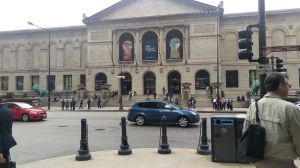


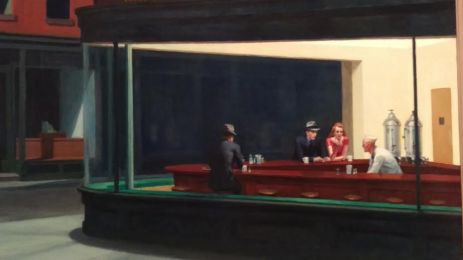














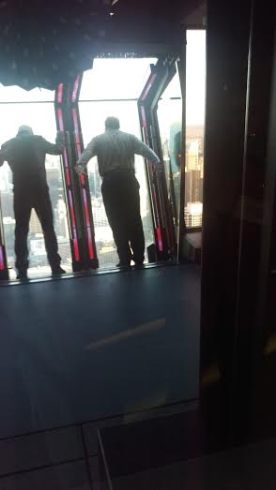

 A few weeks ago, Switchfoot posted a picture of Jon Foreman’s piano on Facebook. There was some saying or other, but what caught my eye was the pile of books on top, all obviously well-read, with worn covers and creased spines. As a librarian and devoted Switchfoot fan, I had to enlarge the photo and read the titles. I put almost all of those I had not already read into an Amazon cart immediately. Abba’s Child is the first one I opened.
A few weeks ago, Switchfoot posted a picture of Jon Foreman’s piano on Facebook. There was some saying or other, but what caught my eye was the pile of books on top, all obviously well-read, with worn covers and creased spines. As a librarian and devoted Switchfoot fan, I had to enlarge the photo and read the titles. I put almost all of those I had not already read into an Amazon cart immediately. Abba’s Child is the first one I opened.